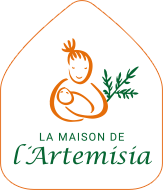Prerequisites
Download in pdfGrowing Artemisia is not simple. That is why certain conditions are required to start growing successfully
Cultivation site
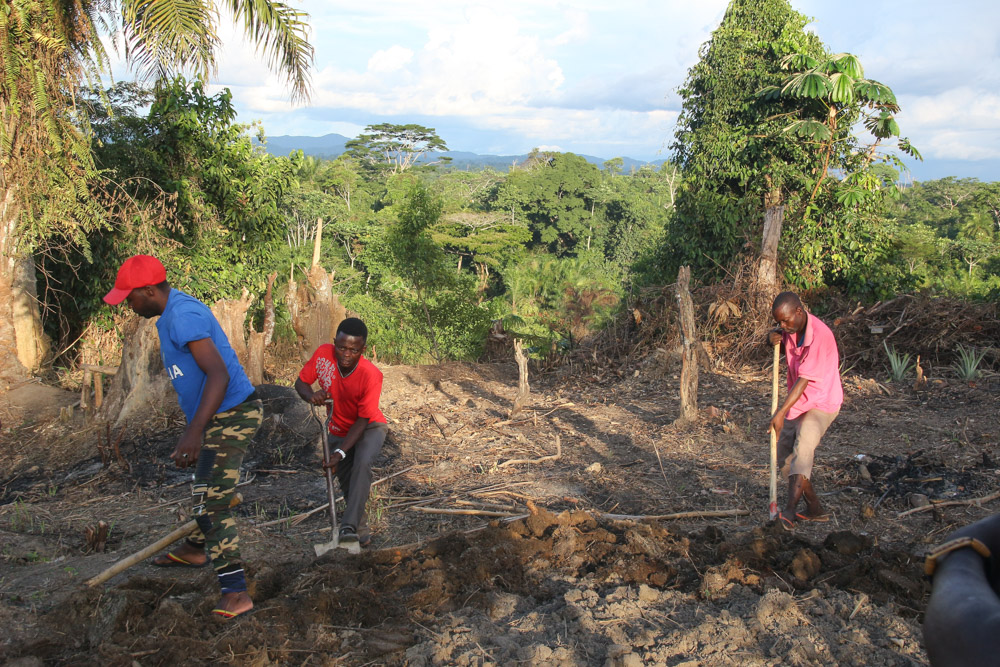
Choose a flat sunny plot, preferably with loose soil. As far as possible, avoid sites on a slope, heavy clay or sandy soil, sites subject to flooding or with poor drainage and next to the sea.
Do not cultivate in areas contaminated by hazardous substances (heavy metals, agrochemicals and other industrial waste). Avoid any risk of soil, air or water pollution. Evaluate the impact of past land use on the chosen cultivation site (previous plantations and, in particular, any possible applications of phytosanitary products) [1].
Access to water
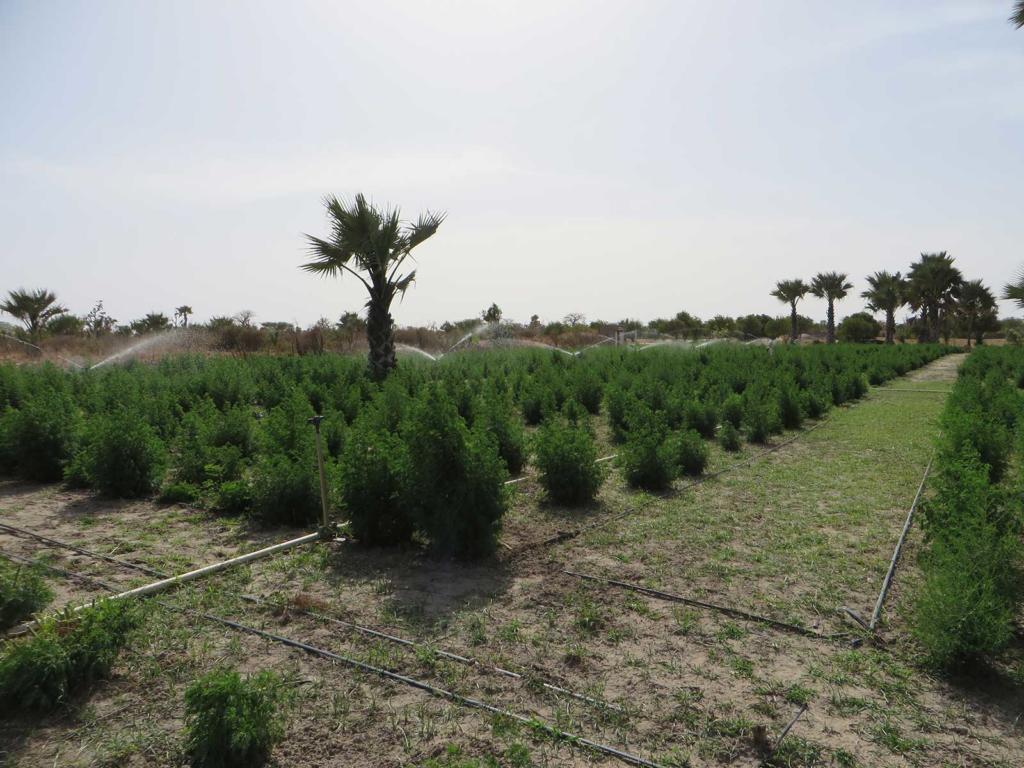
Growing Artemisia annua requires a significant amount of water since each plant must be watered generously morning and evening during the dry season. The amount of water must be reduced according to rainfall during the rainy season.
The installation of a well or borehole and/or irrigation system is often necessary! It is however possible to cultivate Artemisia annua in the rainy season to make significant savings on water but this can give poorer results than in the dry season. The optimal growing period should be determined according the individual context.
Once well established, Artemisia afra is more resistant to high temperatures and drought. Its water needs are especially significant during the first 3 months in the field.
Irrigation water must meet local, regional and/or national quality standards [1].
Irrigation water should not be contaminated by domestic animal or human materials [1].
Excess water is also to be avoided! This can induce leaching of nutrients or reduction in root depth of the plant [2].
Moreover, Artemisia annua is sensitive to waterlogging. For this reason, drainage channels must be provided when growing Artemisia annua during the rainy season [3].
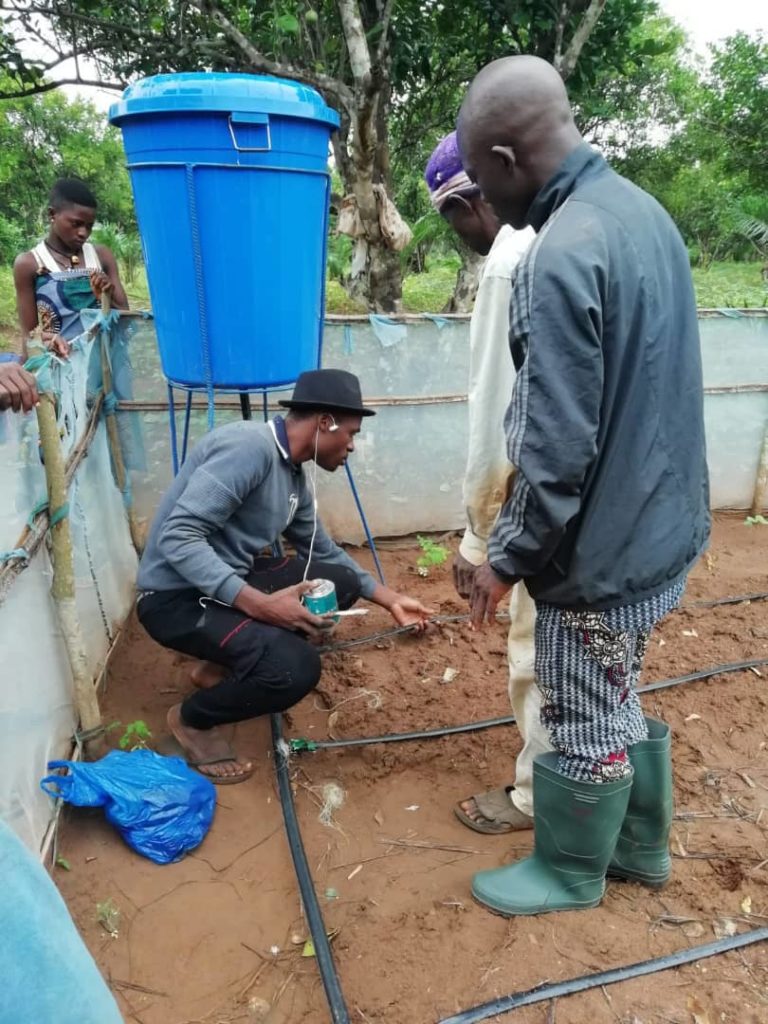
For reference: during the dry season at the House of Artemisia in Tivaouane, Senegal (hot and dry climate, Bsh, average 443 mm/year), plants are watered by sprinklers for 25 to 30 minutes morning and evening, every day for approximately one and a half months following transplantation and 15 minutes morning and evening thereafter. This represents 3.52 and 1.92 mm of water per day respectively.
The choice of irrigation system for each site must be determined according to soil characteristics, topography, water quality and cost but also and above all according to the cultivation area and equipment available to reduce costs [4]. 0n small farms, using watering cans is often the most cost-effective system.
It’s important to reduce the physical impact of water on fragile seedlings to avoid destroying them [5].
At the House of Artemisia in Tivaouane, Senegal, the installation of a sprinkler irrigation system alone increased harvests by 50% compared to the drip irrigation used the previous year. It causes higher transplant mortality at the very beginning of the crop, but allows for better decomposition of compost and mulch cover, leading to better growth of Artemisia annua [6].
To reduce the loss of young plants due to sprinkler irrigation, micro-irrigation is effective when plants are less than 1.2 m high [4].
In general, sprinkler irrigation seems to be more advantageous on sandy soil because roots develop on the surface to capture water that seeps into the soil very quickly; however localised drip irrigation is more appropriate on clay soil because roots are less extensive and go deeper to capture water retained in the soil.
Equipment
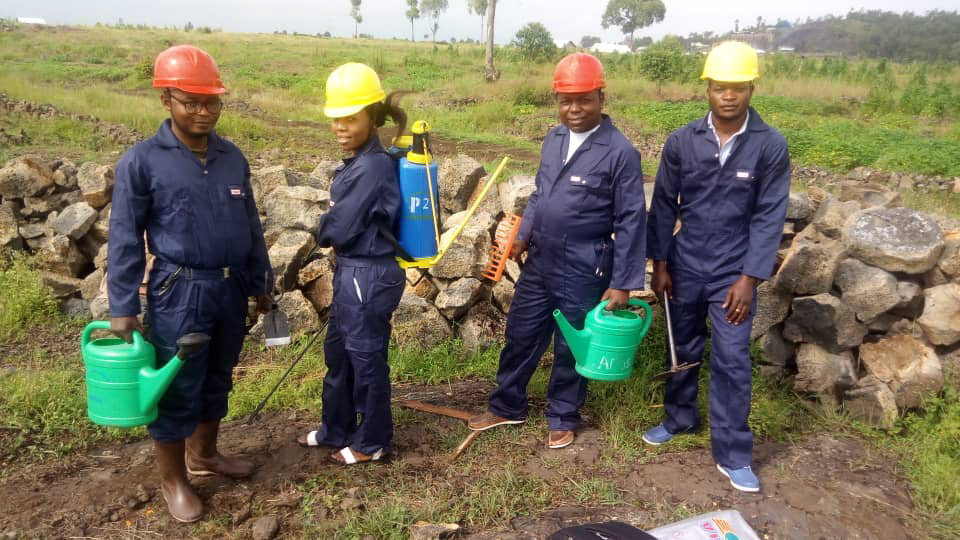
Fences if necessary;
Watering system : watering cans, crop sprayers (reserved for irrigation, used only with water) initially; borehole/well/electric pump/water tower and irrigation system as production and water requirements increase;
Minimum 250 kg compost for a 200m2 trial (10 kg for the seedbed and 240 kg for plants, ie 600 g/plant minimum);
Mulch to cover the cultivated area;
Basic gardening equipment: hoe, spade, shovel, machete, wheelbarrow, buckets, weeder, shears, sieve, …;
Seedbed : wooden frames, honeycombed trays or cut cans, mosquito net or wire netting; protection against direct sunlight and rain;
Small plastic bags or salvaged pots for possible pricking out before transplanting;
Drying: clean tarpaulins or mats with no holes in them. Drying tables, racks or solar system and thermometer when production becomes more professional;
Shredding: machetes or hammer mill (which doesn’t heat up) when production intensifies;
Transportation (if the processing facility is off-site): clean bags;
A freezer may be needed to guarantee quality in the event of insect problems;
Seed collection: basins
Storage of shredded material: clean, dry, hermetically sealed bags or boxes;
Packaging: plastic-free kraft bags, dimensions 20*8*4 cm, with official Maison de l’Artemisia labels and stickers, single use latex gloves, clean gowns, masks, letter-weighing scale for measuring 40 g bags;
Office supplies: notebooks or binders, pens, …
No laboratory tools required.
Crop manager
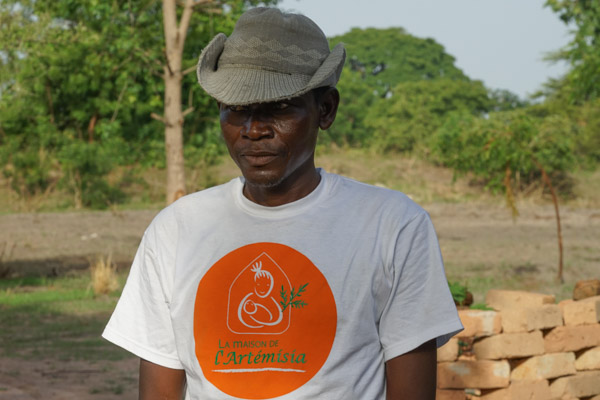
Growing Artemisia annua is not easy. Daily onsite presence and basic agronomy knowledge are required in order to succeed in production of this plant. In addition, pesticide-free growing requires particular care to prevent and counter pests and diseases. Finally, crop rotation is essential, as is the control of other crops.
A crop manager must be appointed to meet the quality requirements for traceability of production batches.
We strongly encourage agro-ecological practices including crop diversification.
Advantages of crop associations:
- Keep the soil alive and fertile;
- Optimise use of growing space;
- Reduce weeding, watering and improve soil by covering with mulch or creeping plants;
- NB: Artemisia growth is directly affected by weeds and soil fertility.
- Limit the use of inputs (water, fertiliser, phytosanitary products) ;
- Protect crops through the resilience effect of biodiversity;
- Improve production quality and quantity;
- Secure farmer income by diversifying production.
When choosing crop associations with Artemisia, consider complementarity:
- Layer crops (choose different strata of foliage allowing Artemisia to grow in the light);
- Choose plants that do not invade its poorly developed root system;
- NB: Artemisia has a pivotal root system that can draw water from deep down if necessary but does not descend if there is water on the surface as its secondary roots will develop in the upper soil horizon;
- Mix with leguminous plants as Artemisia is very demanding of nitrogen (eg: groundnuts, non-climbing beans, peas, soybeans, cowpeas, … but avoid wheat, corn and cassava which also require a lot of nitrogen);
- Cultivate with plants with similar water requirements [7].
What’s more, Artemisia has a repellent effect on many insect pests, protecting other crops grown in association with it.
Several conclusive trials have been reported with the cultivation of melon, peanut, pea, soybean, cowpea, lentil, cabbage, carrot, amaranth, cucumber, tomato, okra, nightshade, round pepper, leek, bissap, banana, kinkeliba, herbs (mint, thyme, rosemary, basil, etc.), non-climbing beans (planted after Artemisia) and lettuce (low competition for about 20 days and then harvested to let Artemisia grow, 20 cm spacing necessary).
Leave on site cut leaves of leguminous plants cultivated in combination to produce an excellent nitrogen-rich mulch!
Consider planting lemongrass and other mulch-producing plants.
Do not cultivate next to plants requiring chemical treatments!
It is vital to use only non-toxic cultivation techniques because species of the genus Artemisia are powerful bio-accumulators! [8] ie, they absorb and accumulate heavy metals (Cr, Ni, Co, Fe, Mn, Cu, Zn), chemical elements and radioactive waste.
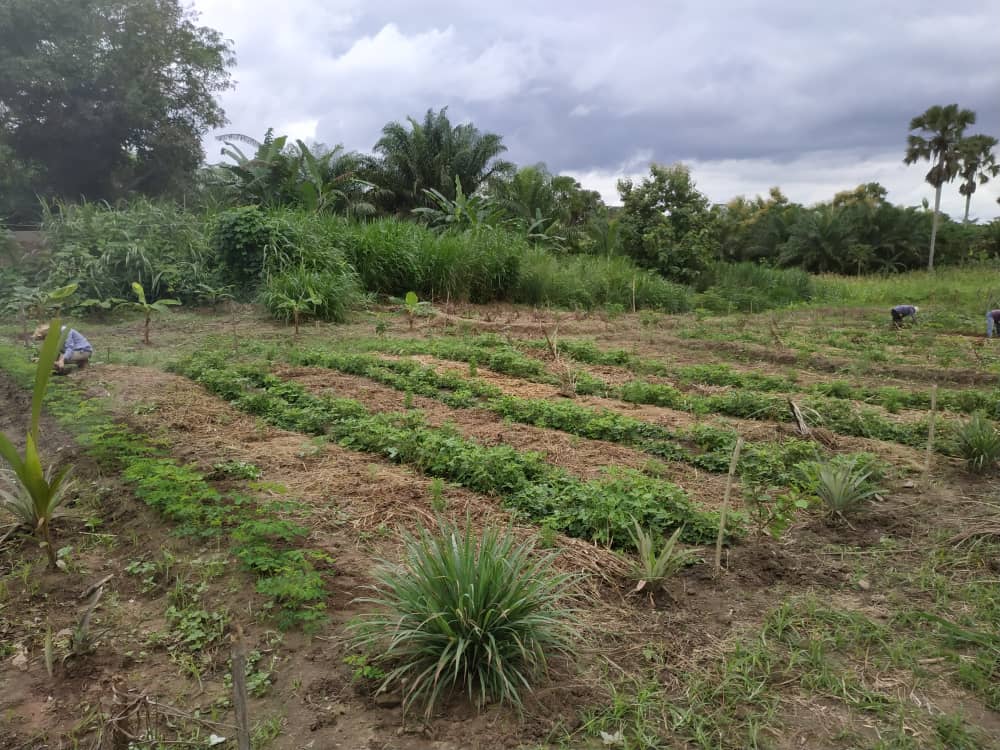
References
1. World Health Organisation. WHO guidelines on good agricultural and collection practices (GACP) for medicinal plants. 2003. https://www.who.int/medicines/publications/traditional/gacp2004/en/
2. Ellman A. Cultivation of Artemisia annua in Africa and Asia. Outlooks on Pest Management. 2010 ; 21(2) : 84-88.
3. World Health Organisation. WHO monograph on good agricultural and collection practices (GACP) for Artemisia annua L. 2006. http://www.who.int/malaria/publications/atoz/9241594438/en/
4. Martinez I. Study about the possibilities of the dissemination of Artemisia annua L. cultivation in the Thiès region of Senegal : performance analysis of three different varieties grown under irrigation. Master’s theis bioengineer in agronomic sciences, under the supervision of Pr. Guy Mergeai, Gembloux, Gembloux Agro-Bio Tech (ULiège). 2015.
5. Ferreira, J.F.S. et al. Cultivation and genetics of Artemisia annua L. for increased production of the antimalarial artemisinin. Plant Genetic Resources: Characterization and Utilization. 2005 ; 3(2) : 206-229.
6. Sougnez A. Étude des principaux facteurs de la production de l’armoise annuelle (Artemisia annua L.) sur le domaine de l’organisation « Le Relais – Sénégal) : Effet de la densité et de la fertilisation. Master’s theis bioengineer in agronomic sciences, under the supervision of Pr. Guy Mergeai, Gembloux, Gembloux Agro-Bio Tech (ULiège). 2017. (Study of the main factors in the production of annual mugwort (Artemisia annua L.) in the field at “Le Relais – Senegal: Effect of density and fertilization).
7. AGRISUD. L’agroécologie en pratiques – GUIDE édition 2020. 2020 (Agroecology Best Practices) http://www.agrisud.org/wp-content/uploads/2020/04/Agrisud_Guide_Agroecologie_2020.pdf
8. XOCHIPELLI. L’Artemisia dans la Pharmacopée Familiale. 2019. (Artemisia in the Family Pharmacopoeia). https://blog.kokopelli-semences.fr/2019/02/lartemisia-dans-la-pharmacopee-familiale/
